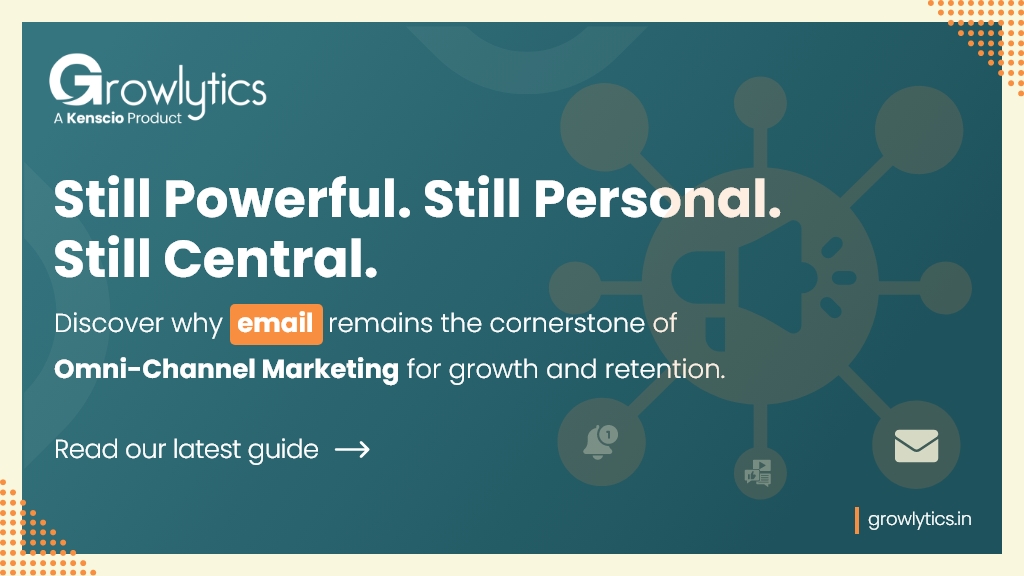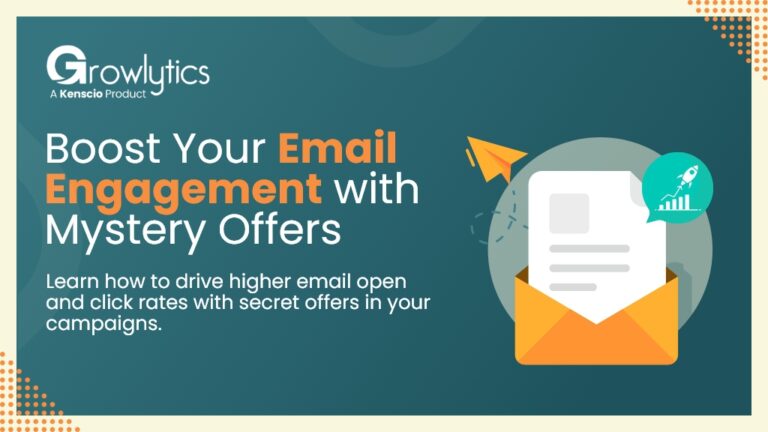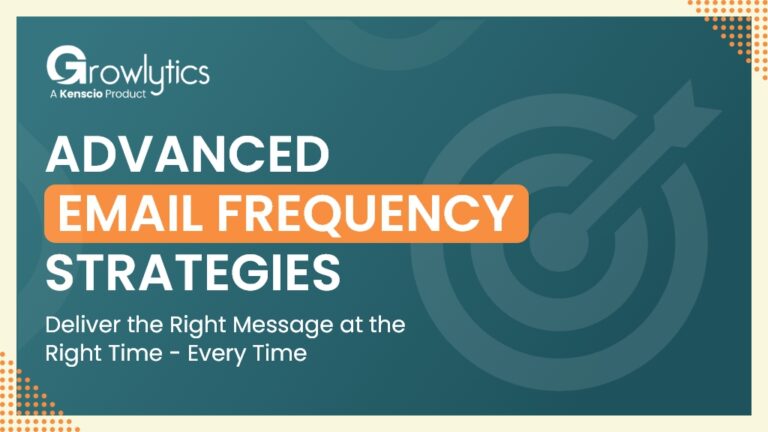Not sure of the right marketing platform?
Consult our e-commerce experts now. We would love to explore ways to increase your sales.
May 26, 2025
.
EMAIL MARKETING


Email stands out as a cornerstone of omni-channel marketing, offering unparalleled versatility, personalization, and measurable impact for both growth and retention marketing managers. This analysis delves into its significance, supported by recent data and industry insights, to highlight why email is indispensable in creating a seamless, customer-centric experience across all touchpoints.
Omni-channel marketing aims to provide a unified customer experience across digital and physical channels, such as email, social media, mobile apps, and in-store interactions. Email, one of the oldest digital communication platforms, remains critical, with projections estimating 4.3 billion users globally by 2025 . Its ability to integrate with other channels makes it a linchpin for both acquiring new customers and retaining existing ones, aligning with the goals of growth and retention marketing managers.
Growth marketing focuses on acquiring and converting new customers, and email is a proven tool for achieving these objectives. Research suggests that email marketing is highly effective for lead generation, with 80% of marketers reporting it as their top strategy.
Here’s how it contributes:
Retention marketing focuses on keeping existing customers engaged and encouraging repeat business, and email is equally critical here. It fosters long-term relationships through consistent, personalized communication, with the following benefits:
Email’s integration with other channels makes it a central hub for personalization and consistency, essential for both growth and retention. Here are key reasons:
Industry examples illustrate email’s impact. For instance, Beachbody uses email to start campaigns with new programs and nutritional information, including clear calls-to-action for website access, resulting in a personalized, customer-centric experience
Statistics further support email’s role:
While email is critical, there are limitations to consider:
To contextualize, compare email with other channels like push notifications and social media:
| Channel | Strength for Growth | Strength for Retention | Integration in Omni-Channel |
| High ROI, scalable lead gen | Personalized triggers, loyalty | Central hub for data, personalization | |
| Push Notifications | Real-time alerts, high urgency | Quick re-engagement, reminders | Limited depth, risk of fatigue |
| Social Media | Broad reach, community building | Engagement via posts, feedback | Variable engagement, less control |
This table highlights email’s unique position as a data-rich, personalized channel, complementing others for a holistic strategy.
For growth managers, leverage email for lead nurturing with segmented campaigns, using behavioral data to drive conversions. For retention managers, focus on triggered emails like abandoned carts and loyalty rewards, analyzing open rates to refine strategies. Both should ensure email integrates with CRM and other channels for a seamless experience, as emphasized in recent reports.
Email is likely indispensable in omni-channel marketing for both growth and retention, offering a high-ROI, data-driven channel that integrates seamlessly with other touchpoints. Its ability to personalize and automate communications makes it essential for acquiring new customers and nurturing existing ones, though careful strategy is needed to mitigate fatigue. Research consistently supports its critical role, with statistics and examples reinforcing its impact as of May 2025.
Email stands out as a cornerstone of omni-channel marketing, offering unparalleled versatility, personalization, and measurable impact for both growth and retention marketing managers. This analysis delves into its significance, supported by recent data and industry insights, to highlight why email is indispensable in creating a seamless, customer-centric experience across all touchpoints.
Omni-channel marketing aims to provide a unified customer experience across digital and physical channels, such as email, social media, mobile apps, and in-store interactions. Email, one of the oldest digital communication platforms, remains critical, with projections estimating 4.3 billion users globally by 2025 . Its ability to integrate with other channels makes it a linchpin for both acquiring new customers and retaining existing ones, aligning with the goals of growth and retention marketing managers.
Growth marketing focuses on acquiring and converting new customers, and email is a proven tool for achieving these objectives. Research suggests that email marketing is highly effective for lead generation, with 80% of marketers reporting it as their top strategy.
Here’s how it contributes:
Retention marketing focuses on keeping existing customers engaged and encouraging repeat business, and email is equally critical here. It fosters long-term relationships through consistent, personalized communication, with the following benefits:
Email’s integration with other channels makes it a central hub for personalization and consistency, essential for both growth and retention. Here are key reasons:
Industry examples illustrate email’s impact. For instance, Beachbody uses email to start campaigns with new programs and nutritional information, including clear calls-to-action for website access, resulting in a personalized, customer-centric experience
Statistics further support email’s role:
While email is critical, there are limitations to consider:
To contextualize, compare email with other channels like push notifications and social media:
| Channel | Strength for Growth | Strength for Retention | Integration in Omni-Channel |
| High ROI, scalable lead gen | Personalized triggers, loyalty | Central hub for data, personalization | |
| Push Notifications | Real-time alerts, high urgency | Quick re-engagement, reminders | Limited depth, risk of fatigue |
| Social Media | Broad reach, community building | Engagement via posts, feedback | Variable engagement, less control |
This table highlights email’s unique position as a data-rich, personalized channel, complementing others for a holistic strategy.
For growth managers, leverage email for lead nurturing with segmented campaigns, using behavioral data to drive conversions. For retention managers, focus on triggered emails like abandoned carts and loyalty rewards, analyzing open rates to refine strategies. Both should ensure email integrates with CRM and other channels for a seamless experience, as emphasized in recent reports.
Email is likely indispensable in omni-channel marketing for both growth and retention, offering a high-ROI, data-driven channel that integrates seamlessly with other touchpoints. Its ability to personalize and automate communications makes it essential for acquiring new customers and nurturing existing ones, though careful strategy is needed to mitigate fatigue. Research consistently supports its critical role, with statistics and examples reinforcing its impact as of May 2025.

marketing automation
Discover 10 expert strategies to increase your email click-through rates, from compelling CTAs to personalized content and mobile optimization.


marketing automation
The evolution of omnichannel commerce is gaining momentum, compelling retailers


marketing automation
How important is it to know your customer acquisition cost and how the Growlytics


marketing automation
Browse abandonment followups are set of automated messages like


marketing automation
Discover advanced email frequency strategies using segmentation, automation, and data analytics to engage your audience effectively. Learn how to optimize your email campaigns.


marketing automation
The success of your eCommerce store depends on the effective usage of the appropriate marketing


marketing automation
The success of your eCommerce store depends on the effective usage of the appropriate marketing


marketing automation
The evolution of omnichannel commerce is gaining momentum, compelling retailers to reevaluate their strategies


Marketing Automation
How important is it to know your customer acquisition cost andhow the Growlytics


marketing automation
Browse abandonment followups are set of automated messages like

Consult our e-commerce experts now. We would love to explore ways to increase your sales.
Consult our e-commerce experts now.
We would love to explore ways to increase your sales.